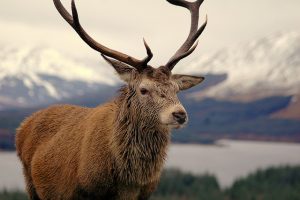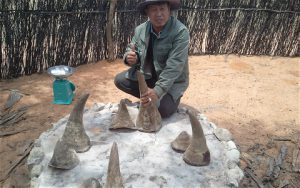The controversy over Jack Ma’s Scottish deer hunting trip touches a raw nerve among conservationists in Scotland. However, the challenge in Scotland is not to preserve the animals as an endangered species, but to restrict their numbers because of the ecological damage they inflict.
Such is the scale of that challenge that last year the Rural Affairs Committee of the Scottish Parliament held an inquiry into “the damage by deer to the natural heritage”.
The effect of high deer numbers on Scotland’s natural environment is stark. Native woodland, which once spread across much of the country, providing a vibrant habitat for a rich array of diverse wildlife, now covers just 4% of the landmass. The bare hills, the lack of natural tree lines (only a couple of kilometres exist in the entire country), the absence of montane scrub and riparian woodland, all testify to the destructive impact of hundreds of thousands of relentlessly grazing mouths. The fragment of native woodland that remains is shrinking year by year.
Defending his decision to join a hunting party in the Scottish Highlands, Mr Ma rightly states that “many wild animals lack natural predators and so run rampant.” That is certainly true of Scotland’s deer population, which in the past was held in check by predators such as wolves and lynx which themselves were hunted to extinction.
Mr Ma, however, appears oblivious to the fact that hunting estates in Scotland are now the prime driving force maintaining unsusustainable deer numbers.
One of Queen Victoria’s most significant legacies to Scotland was the Balmoral model of hunting, based on her famous summer residence in Aberdeenshire. This created a focus on shooting a small segment of the deer population (mature stags) for a short period of the year (from August to October – when the House of Lords "rose" for its summer recess). Deer numbers were deliberately encouraged to rise to ensure an abundant supply of stags for sporting clients to shoot during the hunting season.
The associated large "estates", complete with their stately homes or castles, their loyal personal hunting assistants (known as gamekeepers and ghillies) and their lavish lifestyles were widely emulated by the existing landed gentry and by the nouveau rich created by the industrial revolution.
So pervasive and enduring has this culture been that vast tracts of the country are still managed in the same way today, and marketed to the wealthy around the world, such as Mr Ma.
Over generations, the influence of the landed gentry in the House of Lords, and later the reach of the globally powerful and wealthy, ensured that shooting rights for deer remained tied with the land, that hunting seasons were restricted to protect stags, and that state interference in deer management remained minimal. This combination of landed power, light touch regulation and lack of natural predators led to a doubling of the numbers of red deer living on upland estates from an estimated 200,000 in 1967 (when censuses began) to nearly 400,000 today. The impacts on native woodland and associated biodiversity have been destructive.
That Scotland is one of the least wooded countries in Europe, and has one of the least regulated deer management systems, is not coincidental.
Pressure is now mounting to change the system. Over recent decades, ownership of these large shooting estates in Scotland has become more diverse. Conservation NGOs such as the Royal Society for the Protection of Birds, the National Trust for Scotland and the John Muir Trust have bought some of these "traditional" estates and begun to reduce the deer population for conservation benefit. State landowners (the Forestry Commission and Scottish Natural Heritage) also strive to manage their deer populations for the health of the environment, as more recently do some enlightened private landowners.
This management of deer in the wider public, rather than the purely private, interest echoes the recommendations from a range of recent committees, reports and reviews from the Scottish Parliament – on climate change, woodland expansion, peatland restoration and land reform (as well as that on deer damage itself).
Yet on the ground, attempts at deer reduction by NGOs, state agencies and environmentally minded private landowners meet fierce opposition from traditional neighbours. Wars of words, played out through the local and national media, accuse those attempting to reduce deer populations to more sustainable levels as "slaughtering the iconic native deer" and of threatening the livelihoods and lifestyles of gamekeepers.
So it is not the fact the Mr Ma has come to cull deer in Scotland that is the issue for conservation. It is the fact that he has chosen the Downtown Abbey model to do so, with its focus on high density populations for stag hunting, and its associated negative environmental impacts.







